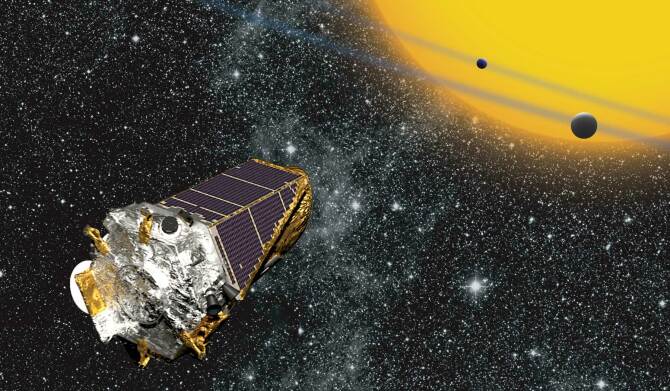We now may know why smaller gas giants typically lose their atmospheres.
The abundance of data collected by the now-defunct Kepler Space Telescope continues to yield valuable insights for astronomers. A recent examination of Kepler’s observations sheds light on a bewildering phenomenon: the scarcity of exoplanets between super-Earths and sub-Neptunes may be caused by the Neptune-like worlds contracting later in life.
The last few decades have proven beyond a shadow of a doubt that there are countless planets among the stars, as evidenced by the discovery of over 5,000 exoplanets, thousands more still awaiting confirmation, and roughly half of them were discovered during Kepler’s nine-year mission.
A vast expanse of nothing lies between those two, roughly 1.5 to 2 times Earth’s diameter; something prevents planets from forming (or remaining) in that size range, but what could make planets shrink? Astronomers searching for exoplanets have discovered many rocky worlds slightly larger than Earth and just as many small-ish gas giants approaching the size of Neptune (like TOI-421 b depicted above).

A pair of leading theories, driven by the local sun and internal radiation release, could account for the shrinkage of sub-Neptune worlds, according to NASA researchers analyzing Kepler data. The researchers examined Kepler data from the Praesepe and Hyades star clusters, solar systems that are between 600 million and 900 million years old. This is significant because photoevaporation happens early in a planet’s life, whereas core-powered mass loss does not start until a planet is roughly 1 billion years old.
The researchers discovered that nearly all of the stars in these clusters still have sub-Neptune planets, indicating that photoevaporation is not causing them to shrink. When examining older stars, only roughly 25% of them have a sub-Neptune, so the study’s top candidate for mass loss is core-powered mass loss; as internal radiation seeps through the crust,
it gradually pushes the atmosphere away; only larger gas giant planets with high gravity can sustain a thick atmosphere indefinitely; those that can not eventually shrink to the size of a super-Earth. At least, that is where the data currently point. Future research will need to test these conclusions with fresh observations.

